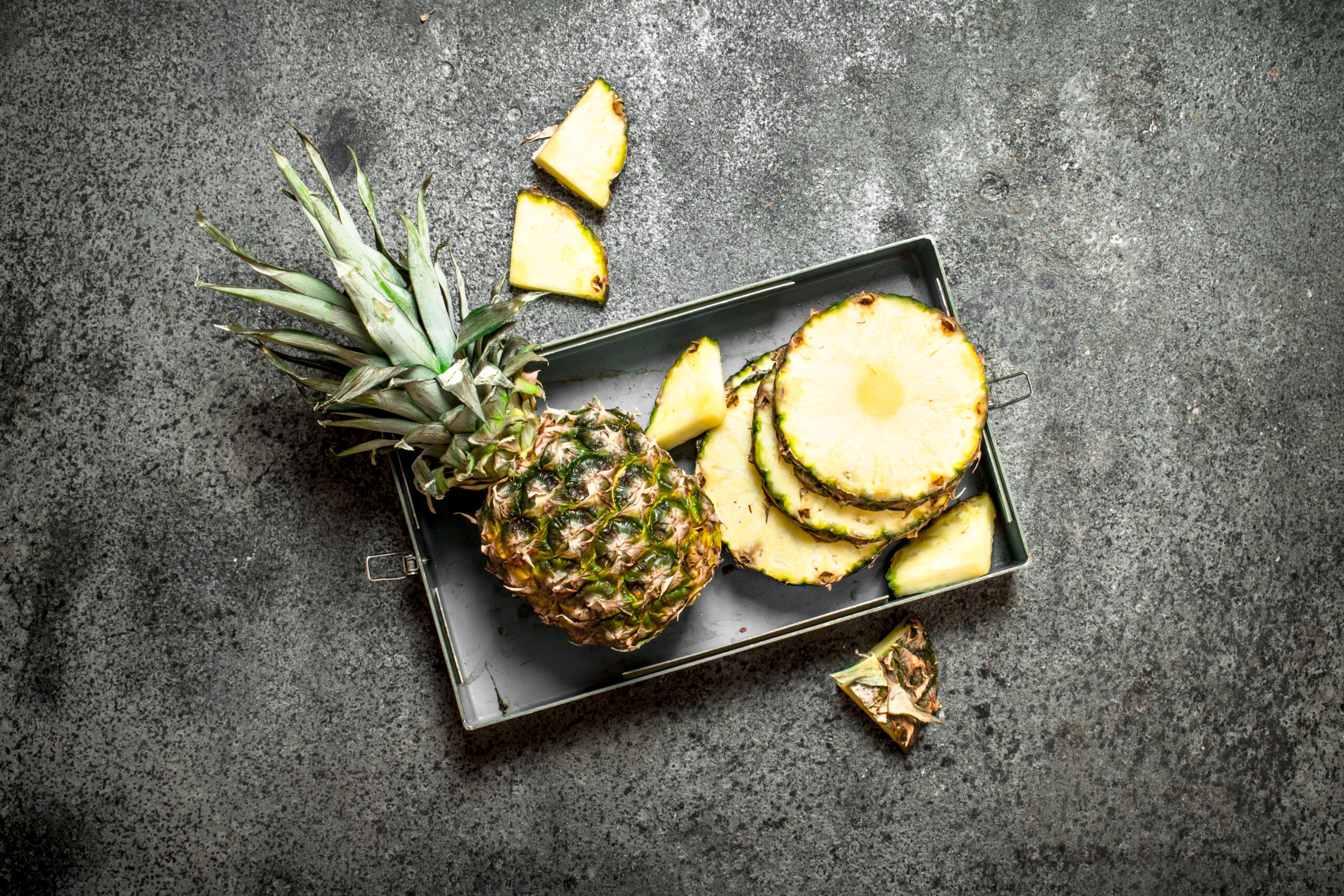Pineapples are more than just a tropical delight to add to your fruit salads or a controversial pizza topping. They’re a powerhouse of flavor, nutrition, and history that deserves a moment in the spotlight. With their vibrant color, sweet-tart taste, and unique spiky exterior, pineapples have long been a symbol of hospitality and luxury. But there’s more to this tropical fruit than meets the eye.
A Slice of History
Native to South America, pineapples (Ananas comosus) were first cultivated by the indigenous peoples of Paraguay and Brazil. The fruit caught the eye of European explorers in the 15th and 16th centuries, who were captivated by its exotic appearance and delicious taste. As a result, pineapples became a symbol of wealth and prestige, often displayed as centerpieces at extravagant feasts. In fact, during the colonial era, they were so rare and expensive in Europe that they were rented out by the day for those who wanted to impress their guests!
Nutritional Powerhouse
Beyond their vibrant appearance and rich history, pineapples are a nutritional treasure trove. A single cup of pineapple chunks contains:
- Vitamin C: Boosts your immune system and helps maintain healthy skin.
- Manganese: Supports bone health and metabolic functions.
- Bromelain: A unique enzyme found in pineapples that aids digestion, reduces inflammation, and may even have anti-cancer properties.
- Fiber: Promotes a healthy digestive system and can help you feel fuller for longer.
Eating pineapple can provide a refreshing way to stay hydrated and meet your daily nutritional needs, thanks to its high water content and an array of essential vitamins and minerals.
A Versatile Fruit
Pineapple’s versatility is another reason it’s so beloved. It can be enjoyed fresh, grilled, roasted, or blended into smoothies. It adds a burst of sweetness to savory dishes, like pineapple fried rice or the ever-divisive Hawaiian pizza. Its tangy-sweet flavor profile makes it an excellent pairing for everything from spicy chili to coconut milk-based curries. For those with a sweet tooth, pineapple upside-down cake and pineapple sorbet are just a couple of ways to turn this fruit into a decadent dessert.
Growing Your Own Pineapple
Believe it or not, growing your own pineapple is easier than you might think! All you need is the crown of a fresh pineapple, some well-draining soil, and plenty of sunlight. Simply twist off the leafy top, let it dry for a few days, and then plant it in a pot. With patience (it can take up to two years), you can grow your own tropical fruit at home. Plus, it makes for a stunning houseplant!
The Pineapple’s Popularity Today
Today, pineapples are enjoyed around the world in a variety of forms—dried, canned, juiced, or fresh. They are also an essential ingredient in many cultural dishes, from piña coladas in the Caribbean to spicy sambal sauces in Southeast Asia. This fruit’s widespread popularity is a testament to its unique flavor and adaptability.
Conclusion
The pineapple is more than just a fruit—it’s a tropical icon with a rich history, unique flavor, and numerous health benefits. Whether you’re snacking on it fresh, mixing it into a smoothie, or incorporating it into a savory dish, the pineapple remains a beloved and versatile addition to any diet. So, next time you enjoy a slice of this juicy fruit, remember: you’re biting into a piece of history and a world of health benefits.
So, what are you waiting for? Grab a pineapple, savor its vibrant flavor, and maybe even consider growing your own little slice of the tropics right at home.

 .
. 